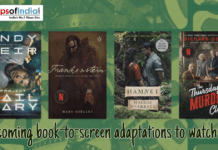Overview
A fascinating book by Robin Sharma, The Monk Who Sold His Ferrari: A Story About Fulfilling Your Desires & Reaching Your Destiny, is a fable that will make you reflect on your life, objectives, your dreams, and how your everyday routines might help you realise them. In other words, ideal for those who practise Zen Habits.
The Fable
The book is written in the style of a fable about Julian Mantle, a well-known lawyer with an insane schedule and a set of priorities centred on wealth, influence, and status. Mantle stands for the ideals of our society as a result. One of his coworkers, who admires Mantle’s remarkable success and desires to be like him, tells the story from his point of view.
However, Mantle leaves the game and vanishes after suffering a heart attack. In search of a life with more purpose, he sells everything he owns and moves to India. He’s a different man when he returns. He seems to be a different person. He has obtained knowledge from some fictitious Himalayan gurus who impart useful mystical guidance, which he shares with his old associate (and the reader).
The Concepts
The Seven Virtues of Enlightened Learning, which Mantle unveils one by one, form the basis of the book. Although the book presents them as genuine virtues discovered by Himalayan gurus, it’s crucial to keep in mind as you read that the author made these up; in fact, he combined them from many sources:
- control your thoughts
- pursue your purpose
- practice Kaizen
- Be disciplined
- respect your time
- serve others selflessly
- live in the now
Each of these virtues, which each have several notions and habits to acquire, is covered in some detail in distinct chapters. The majority of them are highly motivating and may be of great use. I used several of them after finishing the book, such as the ones that encourage optimistic thinking and goal visualisation. Again, these ideas are not novel and have been covered in several other books, but the book offers a wonderful selection of practical ideas you could implement.
The Problem
It would be challenging to incorporate all of the Seven Virtues into your life because each one entails a variety of routines. Additionally, I find several of them to be contradictory.
Here are a few of the many practises associated with each virtue, starting with the first one, “Master your mind”:
- Find the good in every situation; don’t categorise things as “good” or “bad,” but rather experience, enjoy, and take something away from them.
- Find a quiet area and a fresh rose to experience the rose’s heart. Stare at the core of the rose, the inner petals, concentrating on the folds of the flower, the texture, etc..… push away other thoughts that come to you. Start with 5 minutes per day and work your way up to 20. It will be your haven of tranquilly.
- 10 minutes of self-reflection on how to make the next day better.
- Opposition thinking is reframing every unfavourable notion that enters your head. Be conscious of your ideas first. Second, be aware that positive thoughts can readily replace negative ones since they can enter just as quickly. Consider the polar opposite of bad ideas. Focus on being joyful and optimistic rather than pessimistic.
- The lake’s secret. Relax by taking a few deep breaths. Then picture your goals materialising. Visualise the person you wish to become in vivid detail. They will then come to pass.
Conclusion
This book is recommended to everyone interested in developing routines and habits that can improve their lives, enable them to realise their goals, reduce stress, and increase happiness. Yes, there are too many concepts mixed, but you can pick and choose, and some of them have the potential to be quite effective—a pleasant and simple read, too.




